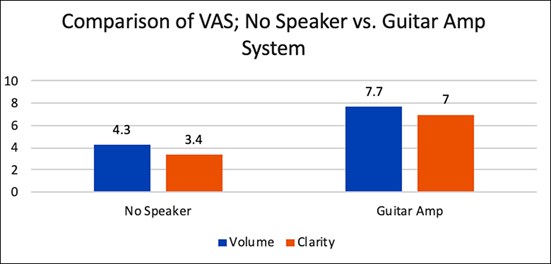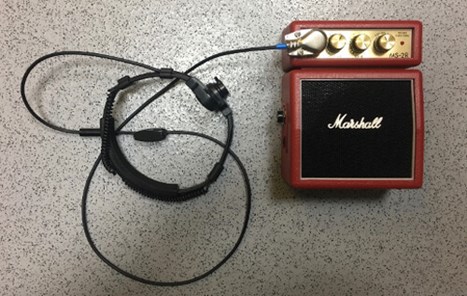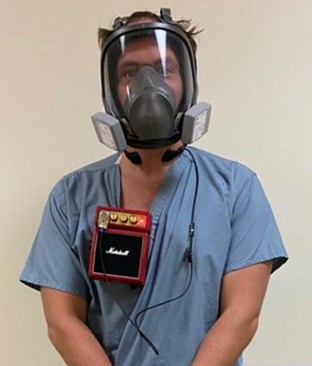
During the COVID-19 (SARS-CoV2) pandemic, current guidelines dictate that surgical teams wear appropriate personal protective equipment (PPE) in theatre. Currently this is, at a minimum, an FFP3 respirator, a visor, fluid repellent gown and gloves [1].
Many surgeons, particularly in ENT where aerosol generating procedures are commonplace, have chosen to use non-disposable respirators for durability and comfort. Two common types of multiple use respirators are half face respirators and full-face respirators with polycarbonate lenses.
It is widely accepted that PPE hampers communication between clinical teams due to a number of factors such as the loss of ability to lip read and non-verbal cues as well as the physical barrier to sound that the masks impose [2]. The latter is particularly noticeable in reusable respirators such as the half and full-face devices. This problem has previously been acknowledged in ENT & Audiology News with regards to the use of a modified snorkel mask.
The authors have trialled a novel throat mic guitar amp system with the view to improve communication in theatre whilst wearing PPE.
Methods
The system was trialled in a live theatre scenario. The author used a throat microphone system (3.5mm plug Tactical Throat Mic System) directly wired into a 1-watt body-worn guitar amplifier (Marshall MS-2R Micro Amp). The system required removing the 3.5mm plug from the throat mic system and replacing it with a 6.35mm guitar amp plug.
The surgical team (n=7) was asked to rate the surgeon on a visual analogue scale (VAS) for both volume and clarity for one case without sound amplification and one case with sound amplification. The mean results were recorded for each system. The surgeon used a 3M full face respirator.
Results
With no amplification, the mean volume and clarity scores were 4.3/10 (volume) and 3.4/10 (clarity). The mean scores with the guitar amp system were 7.7/10 (volume) and 7.0/10 (clarity) [Figure 1].

Figure 1. Comparison of volume and clarity; no amplification vs. guitar amp system.
Discussion
In addition to the guitar amp system, we also trialled a Bluetooth speaker system, however it was deemed almost unintelligible by the theatre team. This was due to the delay between speaking and the speaker emitting sound. The guitar amp system, however, was deemed to be very effective by the whole theatre team. All members involved felt that it improved both the volume and the clarity of the surgeon’s speech.
Whilst we appreciate that this is a small pilot study with a limited number of participants, the results are positive and the authors are now routinely using this system in theatre. Based on our results, a throat mic guitar amp system (fig.2 & 3) improves communication between members of a theatre team and may in turn have an impact on patient safety.
Our system involved removing the 3.5mm headphone style plug from the throat mic and replacing it with a 6.35mm plug compatible with the guitar amplifier which requires a degree of technical expertise, however simple adapters are available to overcome this issue.

Figure 2. Guitar Amp throat mic system.

Figure 3. Surgeon wearing guitar amp throat mic system and full-face respirator.
Conclusion
The use of a throat mic guitar amp system improves communication in theatre by enhancing volume and clarity of voice. The authors recommend the use of a throat mic system for theatre teams or any clinicians whose role dictates wearing respirator face masks.
References
1. Good Practice for Surgeons and Surgical Teams. Royal College of Surgeons of England. April 2020:13-15.
www.rcseng.ac.uk/standards-and-research/standards
-and-guidance/good-practice-guides/coronavirus/
Last accessed August 2020.
2. Grote H. Read my lips; the downside of PPE (and how you can improve communication). Royal College of Physicians News. May 2020.
https://www.rcplondon.ac.uk/
news/read-my-lips-downside-ppe-and-how
-you-can-improve-communication
Last accessed August 2020.





